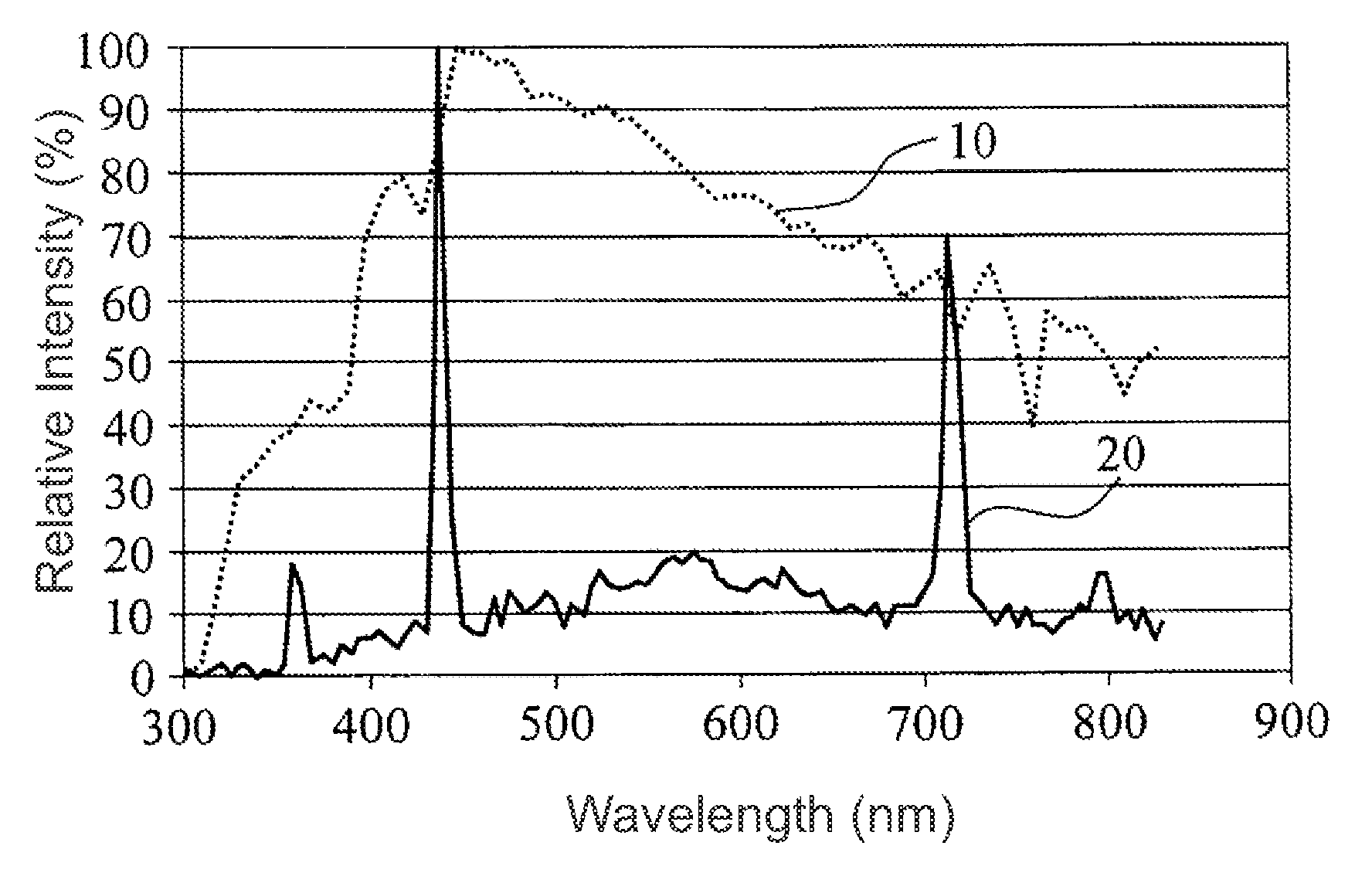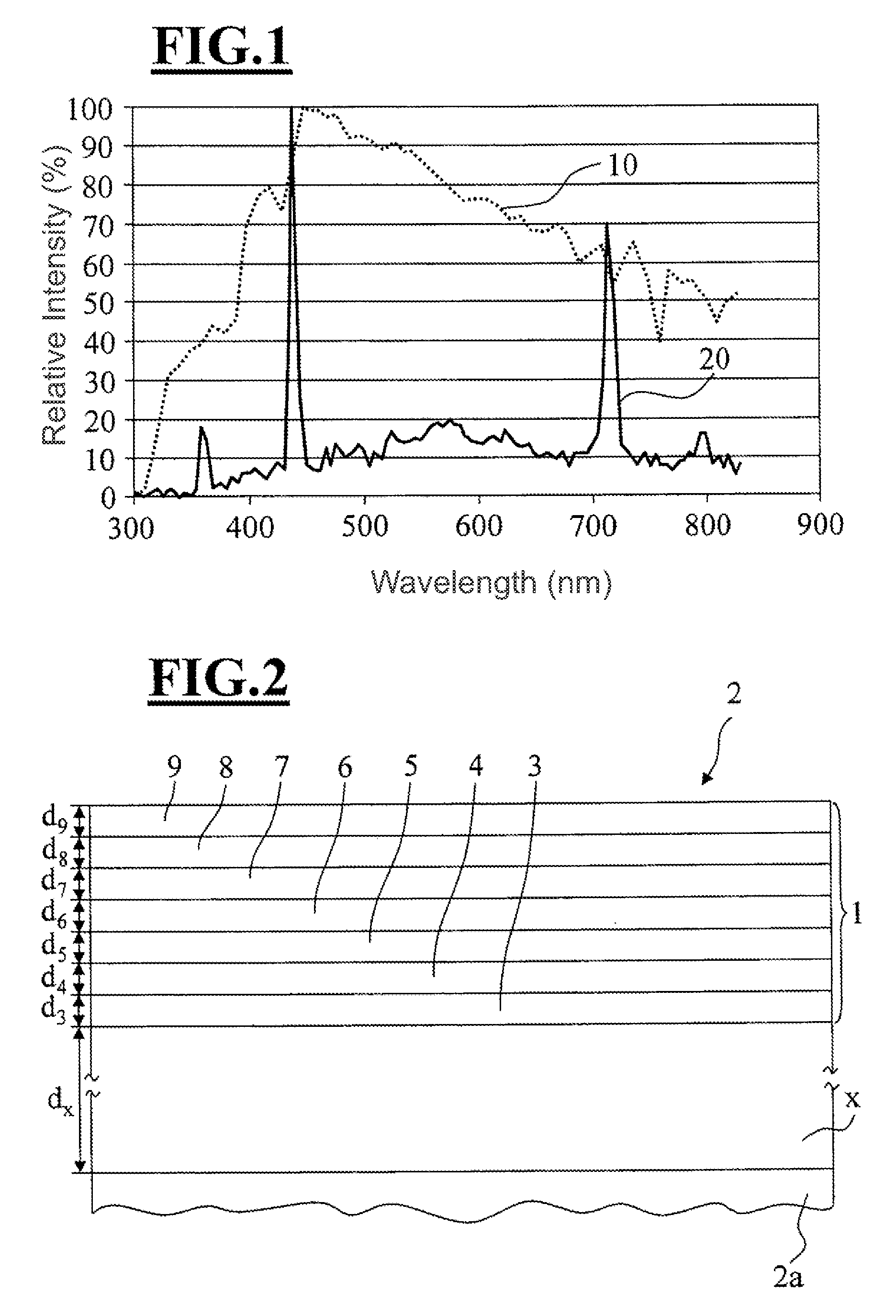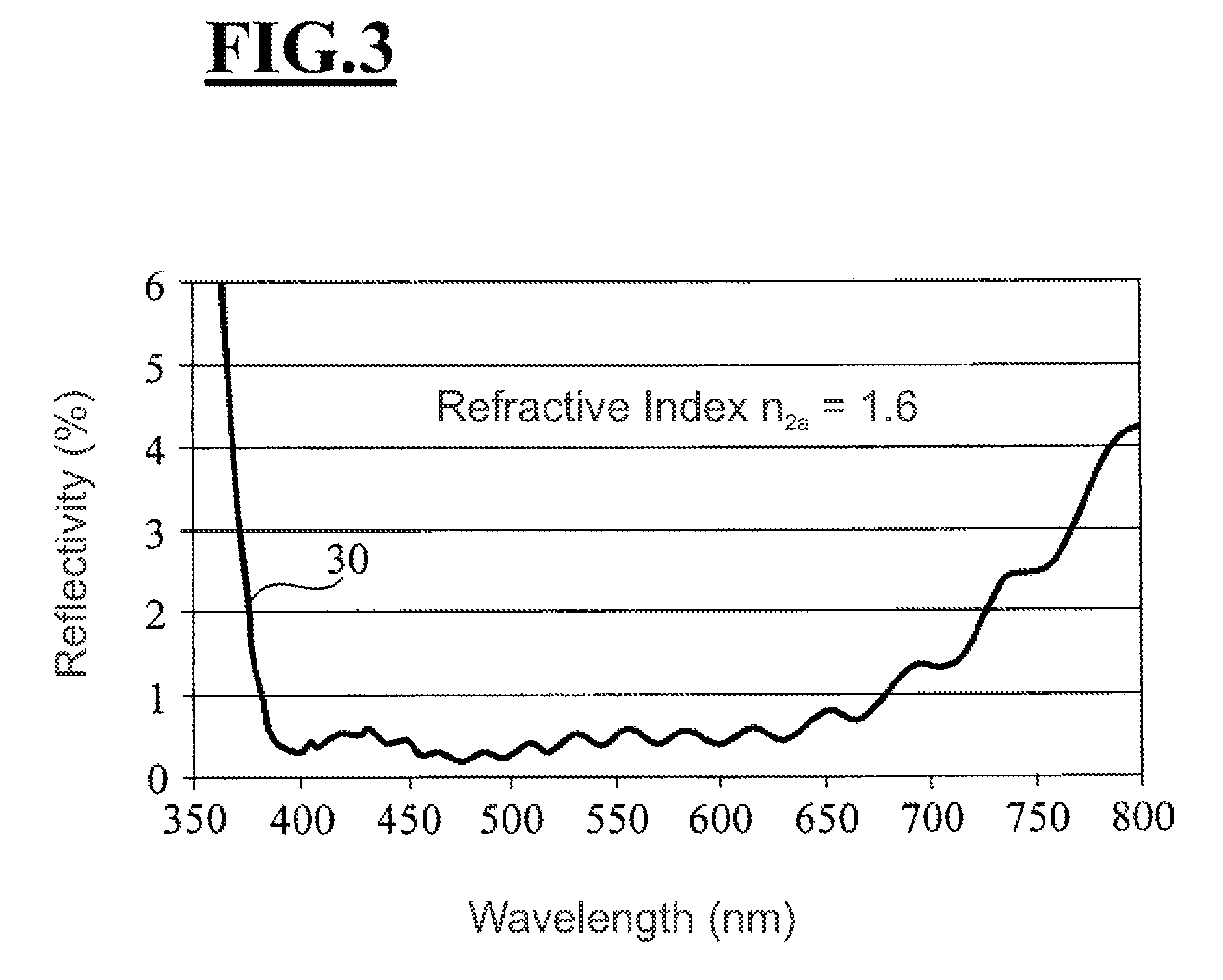Spectacle lens with color-neutral anti-reflection coating and method of making the same
a technology of anti-reflection coating and spectacle lens, which is applied in the direction of optics, instruments, optical parts, etc., can solve the problems of disturbing reflections on the front side and back disturbing glare on the front side of the spectacle lens, and affecting the perception of the wearer of the spectacl
- Summary
- Abstract
- Description
- Claims
- Application Information
AI Technical Summary
Benefits of technology
Problems solved by technology
Method used
Image
Examples
Embodiment Construction
[0041]FIG. 1 shows the illumination curves of daylight 10 standardized to 100% intensity (here approximated to the D65 standard known to the person of ordinary skill in the art) and a fluorescent tube 20. When simultaneously considering both illuminations (10, 20) during the configuration of the interference layer system, one obtains the spectral reflectance curve 30 of FIG. 3 for the antireflection coating 1 of a spectacle lens 2 shown in FIG. 2 (not to scale).
[0042]The antireflection coating 1 in the shown embodiment includes a scratch-resistant layer (x) and seven individual layers (3, 4, 5, 6, 7, 8, 9) which form the interference optical system.
[0043]The spectacle lens 2a which forms the substrate and has a refractive index n2a of 1.6 is initially provided with a scratch-resistant layer (x). The scratch-resistant layer (x) has a refractive index nx of 1.6 and a thickness dx of 2.5 μm. The system of the antireflection coating 1, which functions as an interference optical layer sy...
PUM
| Property | Measurement | Unit |
|---|---|---|
| surface energy | aaaaa | aaaaa |
| refractive index | aaaaa | aaaaa |
| thickness | aaaaa | aaaaa |
Abstract
Description
Claims
Application Information
 Login to View More
Login to View More - R&D
- Intellectual Property
- Life Sciences
- Materials
- Tech Scout
- Unparalleled Data Quality
- Higher Quality Content
- 60% Fewer Hallucinations
Browse by: Latest US Patents, China's latest patents, Technical Efficacy Thesaurus, Application Domain, Technology Topic, Popular Technical Reports.
© 2025 PatSnap. All rights reserved.Legal|Privacy policy|Modern Slavery Act Transparency Statement|Sitemap|About US| Contact US: help@patsnap.com



